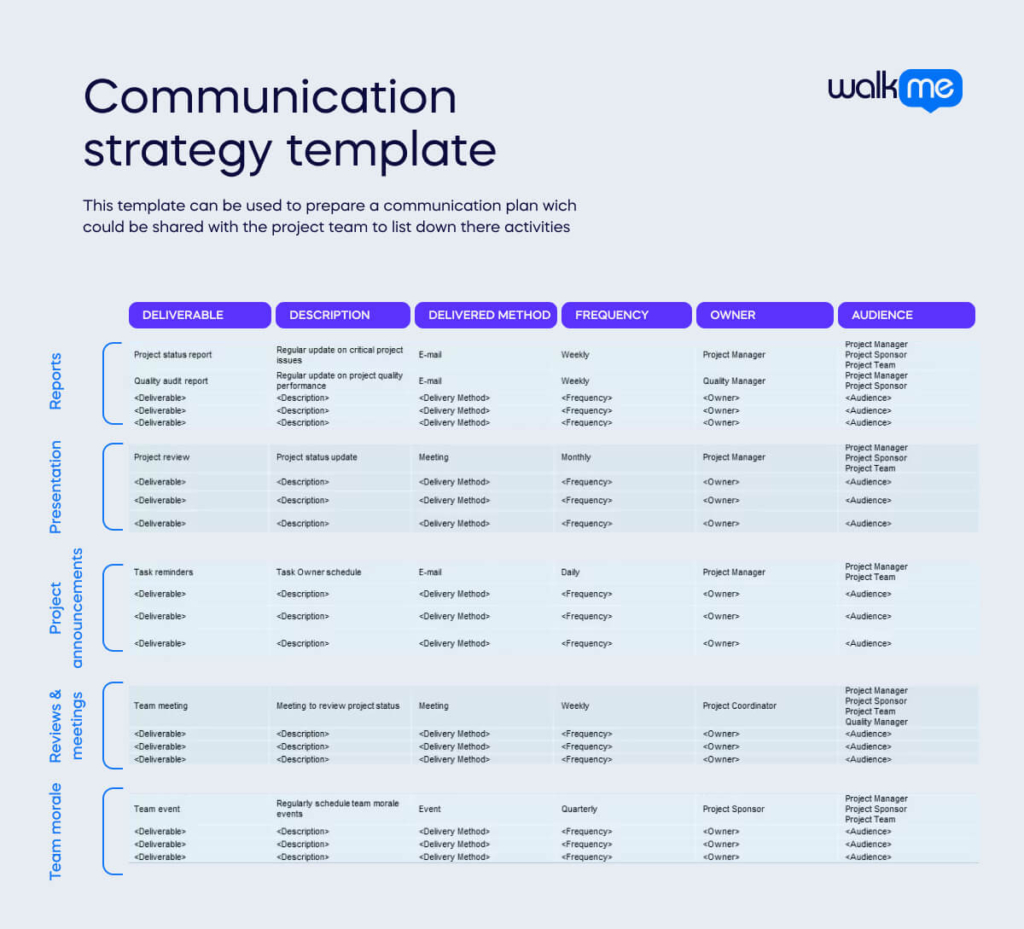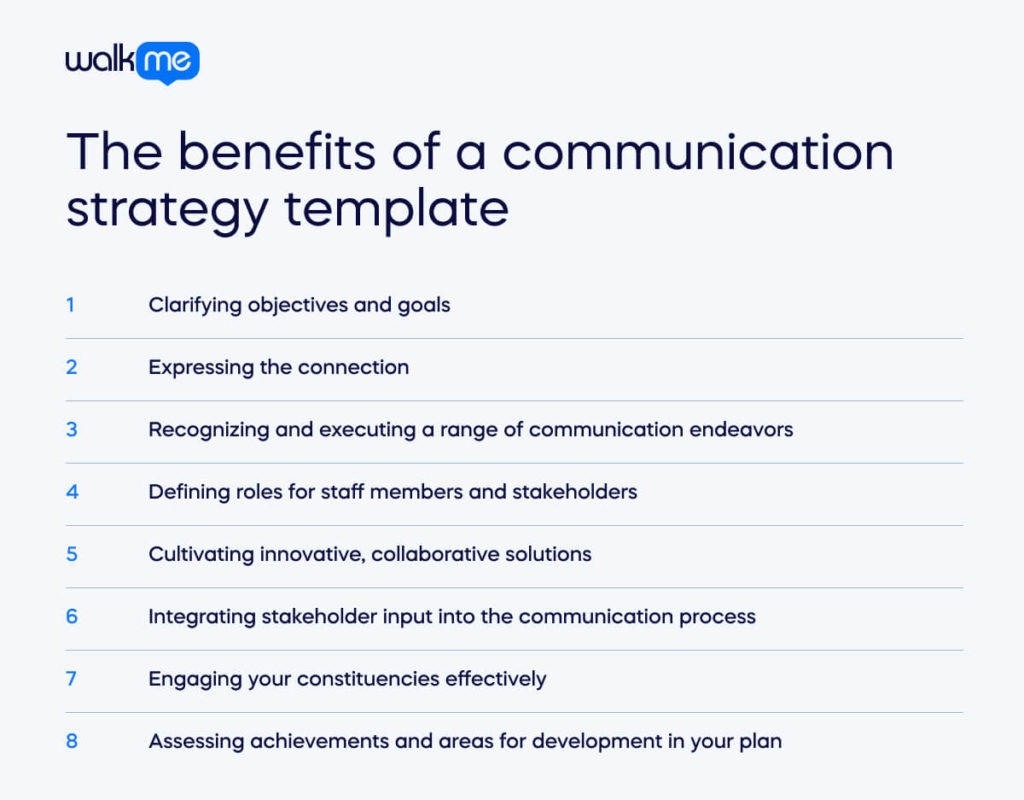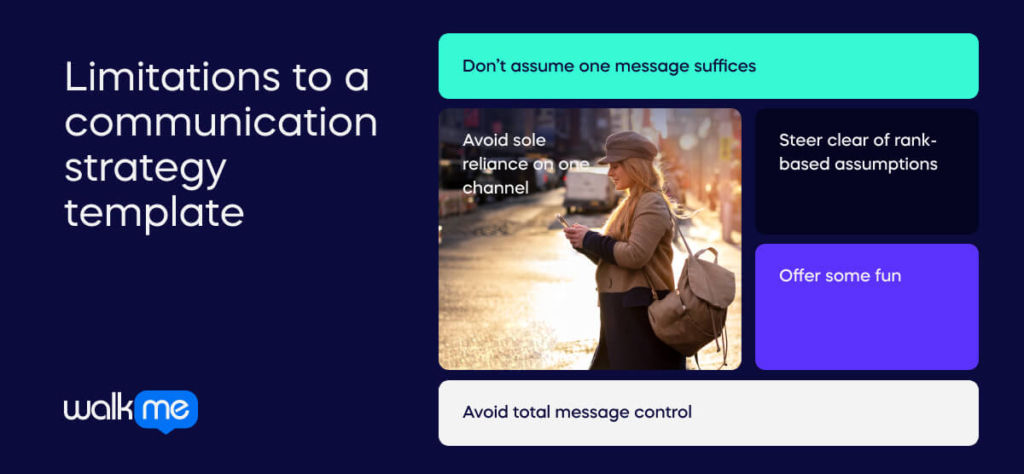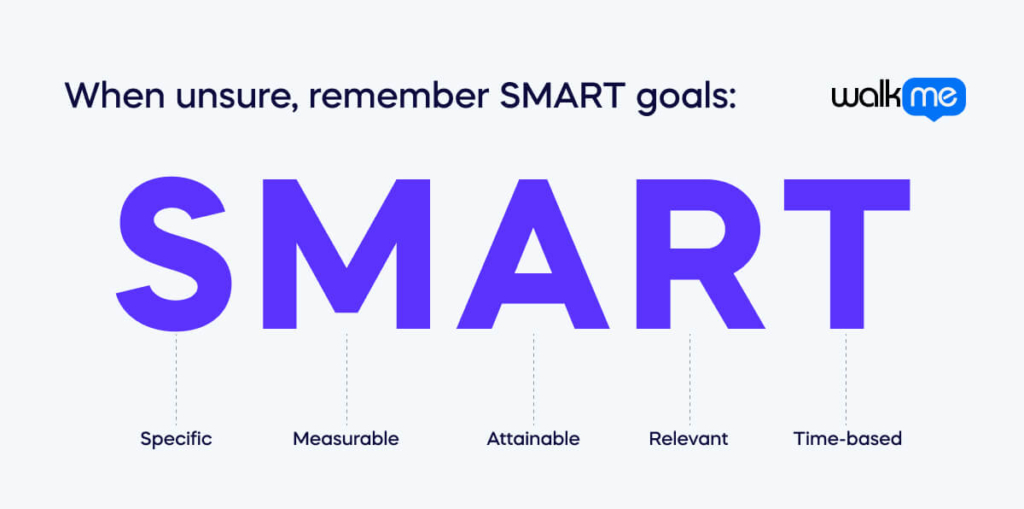A robust communication strategy template can be the key to success for any change management effort, as it tackles the reasons for resistance to change through effectively communicating the reasons change is essential.
You give your inspirational speech, and everyone seems excited by your new ideas, yet the months roll by, and nothing changes.
If this is you, it’s time to up your communication strategy template game.
Don’t be one of the 23% of North American internal communications professionals with no communication strategy. Use a robust communication strategy template for effective comms and business success in your change management communication efforts.
To help you write a communication strategy template tailored to your organization, we will explore the following topics:
- What is a communication strategy template?
- Why is a communication strategy template important?
- What are the benefits of a communication strategy template?
- Are there limitations to a communication strategy template?
- How can you use a DAP to promote communication?
- How do you create a communication strategy template?
What is a communication strategy template?

A communication strategy template allows you to express information to the relevant stakeholders efficiently.
It helps standardize how you promote messages, who to focus them on, and the chosen channel(s). Such plans are valuable during crises and when introducing novel projects or products.
Why is a communication strategy template important?
Communication is at the heart of a successful business. A communication strategy template is a quick-start guide to successful ways to get your message out quickly and effectively so you make a quick ROI, and everyone sings from the same song sheet.
Without a communication strategy template, you will likely approach communication methods differently every time and in a far less focused way.
The absence of this tool makes learning from successes and failures much more time-consuming, as there is no benchmark for your approach.
Using a change management communication plan template is vital to help you stay ahead of competitors as you convey and target messages accurately, in the right way, to the right people, for the right reasons.
What are the benefits of a communication strategy template?

Communication strategy templates are integral to nonprofit organizations, offering substantial advantages beyond a single outreach effort as you convey critical messages to key stakeholders throughout your communication efforts.
A proficient communication plan aids your team in many aspects, the first of which is clarifying objectives and goals.
1. Clarifying objectives and goals
Serving as your communication roadmap, this plan navigates you toward your destinations and guides the route to reach them via your communication objectives.
This point is especially the case with a project management communication plan, where communication must be effective on a smaller scale to ensure staff meet project goals through collaboration goals.
2. Expressing the connection
Between audiences, messages, channels, activities, and materials.
Engaging in the communication planning process assists in identifying your target recipients, intended message content, and the most suitable means of engagement.
Each audience possesses distinct attributes, requirements, and motivations, which you can address effectively through strategic planning.
3. Recognizing and executing a range of communication endeavors
Given the limitless options for disseminating messages, a communication plan facilitates the selection of activities with optimal outcomes.
4. Defining roles for staff members and stakeholders
For efficient communication, a clear delineation of responsibilities and contributions is crucial. A well-defined plan fosters alignment among stakeholders, instills a sense of ownership, and ensures a uniform message.
5. Cultivating innovative, collaborative solutions
Involving staff, stakeholders, constituents, interns, and junior members in the planning process harnesses diverse perspectives and a breadth of ideas.
6. Integrating stakeholder input into the communication process
Seeking input from stakeholders and the community regarding your plan demonstrates your regard for their opinions. Diverse viewpoints aid in refining your plan for maximum impact.
7. Engaging your constituencies effectively
Employing communication planning strategies and identifying avenues to connect with your target audiences enhances the effectiveness of your interactions.
8. Assessing achievements and areas for development in your plan
Organizations often conduct mid-course evaluations to pinpoint strengths, weaknesses, and challenges.
These insights facilitate the creation and implementation of innovative approaches. Design a distinctive, customized evaluation strategy to gather information for plan enhancement consistently.
Understanding these benefits allows you to ensure you need a communication strategy template and optimize the help of which it is capable.
Are there limitations to a communication strategy template?

Communication is complex, and standardizing your approach can limit creativity and reach.
1. Don’t assume one message suffices
Believing a single well-expressed message universally reaches and uniformly comprehends all employees is a misstep. With diverse perspectives, interpretations vary.
Communication is intricate; one document or campaign can’t cater to all needs.
In contexts like an engineering firm, where PhDs coexist with apprentices, distinct information needs arise. Continuously sharing through varied approaches leaves an imprint.
3. Avoid sole reliance on one channel
Avoid communicating with factory workers solely via an intranet they rarely access or relying exclusively on newsletters for van drivers who are on the road.
Employee intranets fail by neglecting accessibility. An internal communications app connecting channels is vital.
4. Steer clear of rank-based assumptions
Teams wrongly assume shop floor employees disregard the organization’s vision. Higher up, some are uninterested beyond their roles.
Effective communication sometimes ensures uniform engagement, delivering information regardless of rank. Your communication strategy template must be impartial in how it engages staff of different roles.
5. Offer some fun
Communication often centers on dry content. While sharing data is crucial, audiences enjoy lighter content.
Effective communication combines news, knowledge, feedback, and enjoyment. Focus risks disengagement.
Add social events, accomplishments, and light-hearted polls. Fun garners appreciation and higher engagement.
6. Avoid total message control
Reject the idea all messages need control. Success lies in the precise handling of critical communications. Not every email needs scrutiny. Focus on campaigns; stress less on details.
How can you use a DAP to promote communication?
You can also use a DAP (digital adoption platform) to promote excellent communication as part of your communication strategy.
- Implement training on how to communicate effectively in the workplace.
- Give training mini-modules on interacting with managers to constructively ask for promotions or flexible working arrangements.
- Offer training modules on leadership communication skills to promote self-development and understanding of managerial roles.
- Build training modules to help everyone understand more about every role in the organization to promote empathy and better communication.
Utilize a DAP using in-app guidance to help staff train and develop their communication skills as they work.
How do you create a communication strategy template?

Follow these communication plan example steps to create the best communication strategy template for your organization.
1. Audit current communications materials
Before beginning your plan, determine its integration within your business. Completing a “state of the union” or a current communications climate audit is crucial. Doing so aids in identifying potential issues.
For instance, consider crafting a communications plan for a new product launch. To formulate the plan, an audit is necessary to uncover gaps in your present marketing approach.
Following the audit, you might discover a significant void in marketing materials, rarely discussing a topic aligning with your new product. Ensuring you include this topic in your communications plan is essential.
To execute the audit, gather and analyze marketing plan data meticulously, creating a path forward from the findings. Conducting focus groups or surveys could help uncover gaps in current communication materials.
2. Set SMART goals post-audit
Post-audit, establish goals based on the data. What’s the plan’s intended achievement?
When unsure, remember SMART goals: Specific, Measurable, Attainable, Relevant, Time-based.

For example, a small agency crafting a client’s communication plan might aim to “increase applications by 25% in a quarter.”
Alternatively, specific objectives are vital if HR outlines a plan to propose a new growth matrix for non-managerial contributors within your strategic communication plan.
Even if less quantifiable, like “enhance employee retention by 10% in a year” or “boost employee satisfaction via NPS scores,” HR must present these goals to engage leadership.
3. Identify your audience
Effective communication begins by comprehending your audience. For a crisis communication plan targeting stakeholders, identify the recipients. Stakeholders encompass employees, investors, customers, local officials, and media.
For media, consider a press release detailing goals. Specify who addresses media, outline content, and establish an action plan.
Conversely, for employees, design a current internal document. Include DRI contact for queries.
4. Outline and write with the audience in mind
When ready to draft your plan, begin with a table or chart to pinpoint messages, intended recipients, and communication channels.
Once you’ve established a basic outline, structure your communication plan as follows (feel free to insert these sections into a Table of Contents for your plan):
1. Purpose (plan’s objective)
2. Escalation Framework (‘first line of defense and ‘greater response team’)
3. Employee roles and responsibilities
4. Do’s and Don’ts
5. Effective response plan maintenance
When crafting your communication plan, collaborate with stakeholder representatives for accuracy. Strategies should address goals and potential risks.
For example, if an agency promotes a client’s product, a risk could be spending on ads without guaranteed ROI. To tackle this, the agency should outline steps to ensure ad effectiveness before going public.
5. Choose delivery channels
Your choice of communication channels depends on your message and target audience. For instance, when crafting a plan for internal employees, options include a company-wide email, a team communication app, or in-person meetings.
Conversely, communicating with customers might involve an email newsletter or a press release.
Naturally, your channel selection aligns with your goals. As you compose your communication plan, remember to consider distribution methods.
6. Assign delivery responsibilities
After identifying your audience and chosen communication channel(s) for delivering the plan, establish the Directly Responsible Individual (DRI) for message delivery.
For instance, if your HR team presents a new growth matrix to leadership, the Director of HR could deliver the initial pitch. Upon gaining leadership approval, HR representatives might conduct individual training sessions for internal teams, ensuring all employees comprehend internal changes and their rationale.
7. Estimate timeframes
You should aim to gauge the time required for each step to implement your strategy. For example, if your plan involves cascading from higher-ups to employees, consider the time needed for the chain of command. Additionally, it’s prudent to anticipate the duration of a media cycle.
For instance, in the case of a minor setback in an ad campaign, the advertising agency could approximate that addressing the issue will take around a month. This action encompasses meetings with the client, stakeholders, and employees to chart the way forward.
8. Measure plan results
There’s perpetual room for enhancement. Evaluate the plan’s outcomes post-stakeholder presentation, discerning successful aspects and areas for future refinement.
For example, an ad agency might have fallen short of the objective to boost applications by 25% in a quarter. They could adjust goals, extend the timeline, or realign quarterly priorities.
Alternatively, if the particular language in your plan incites stress among internal stakeholders, consider rephrasing to ensure a positive, beneficial tone in subsequent iterations.
Crafting a communication plan can be akin to a “choose your own adventure” journey. The crux is selecting components that align with your business needs, mainly when effective communication is pivotal. Address stakeholders’ information needs and devise optimal communication strategies.
Communication plans can be intricate, but crafting an effective one offers enduring benefits. These plans encompass stakeholder analysis and guidelines for incorporating vital communications.
Tailor your communication strategy template to your organization
The most important thing to remember is to tailor your communication strategy template to the unique nuances of your organization, as this is the ultimate key to success. While the principles and frameworks outlined in various templates serve as valuable starting points, the true power lies in customization.
Embrace your organization’s culture, objectives, and audience intricacies to craft a communication strategy that resonates authentically in every interaction with colleagues at all levels. Remember, a one-size-fits-all approach rarely delivers the desired impact, and you must adjust communication for the person you want to influence with your organizational change communications.
By aligning your template with your organization’s essence, you pave the way for effective, purpose-driven communication that fosters growth and engagement.

